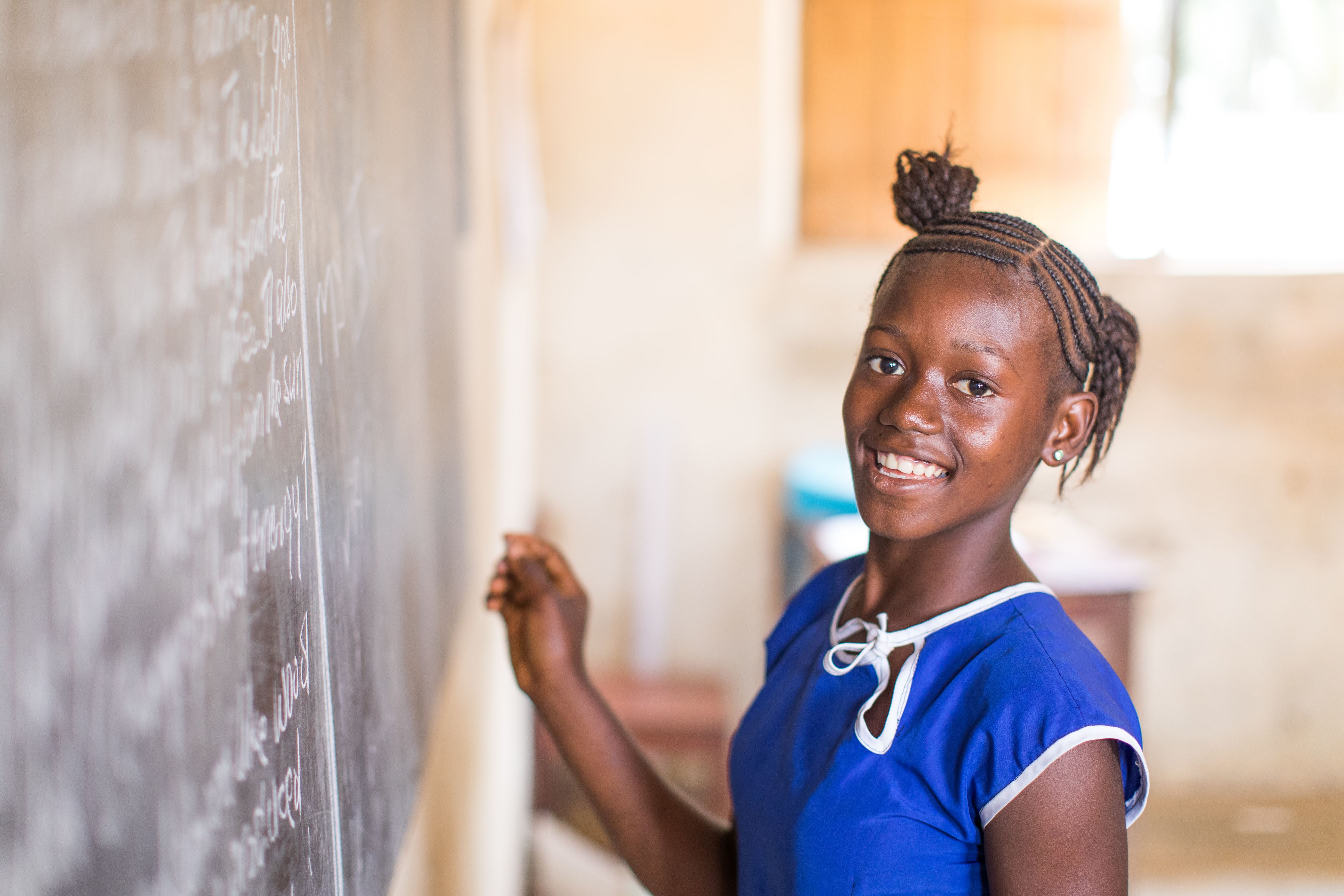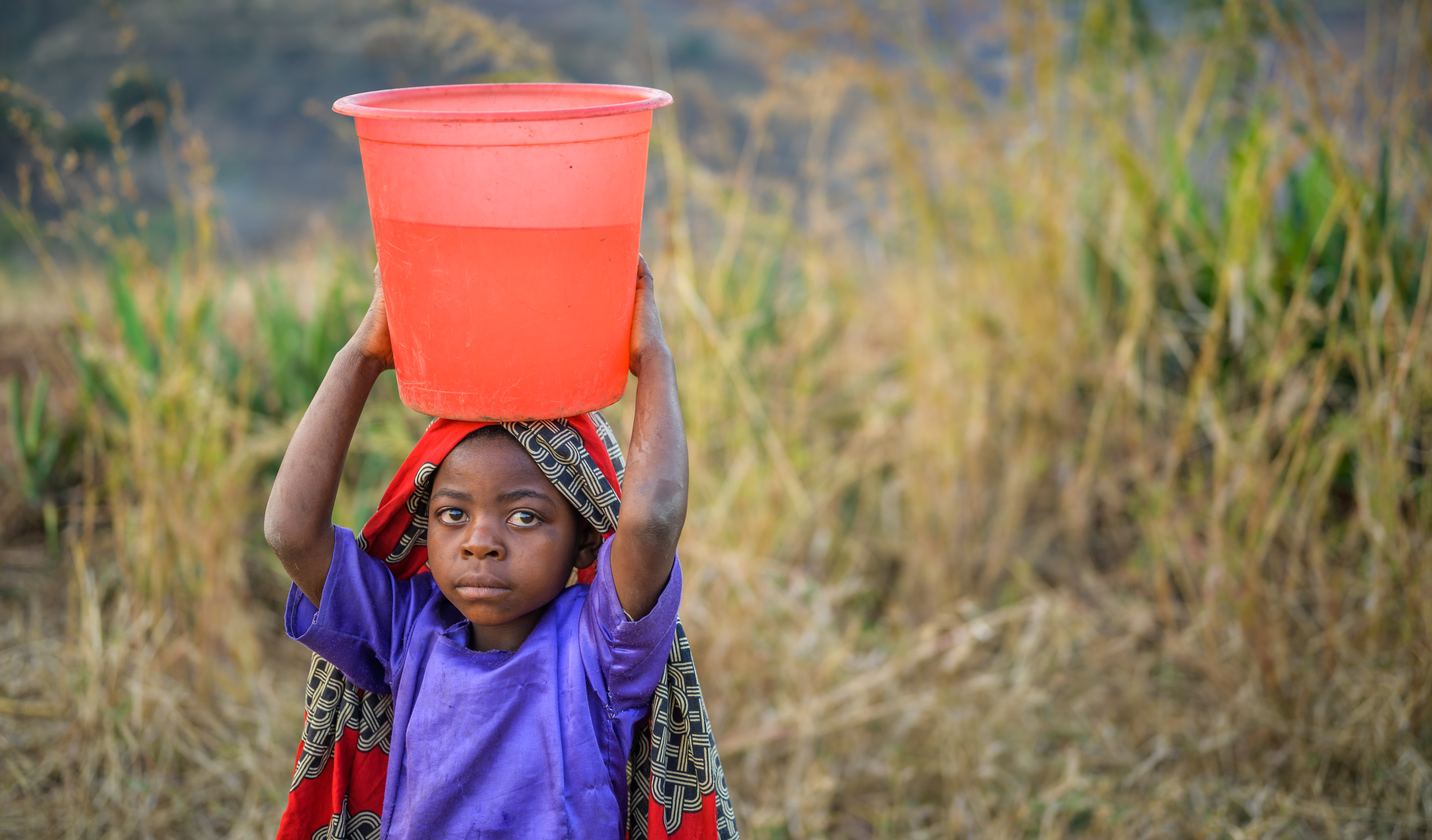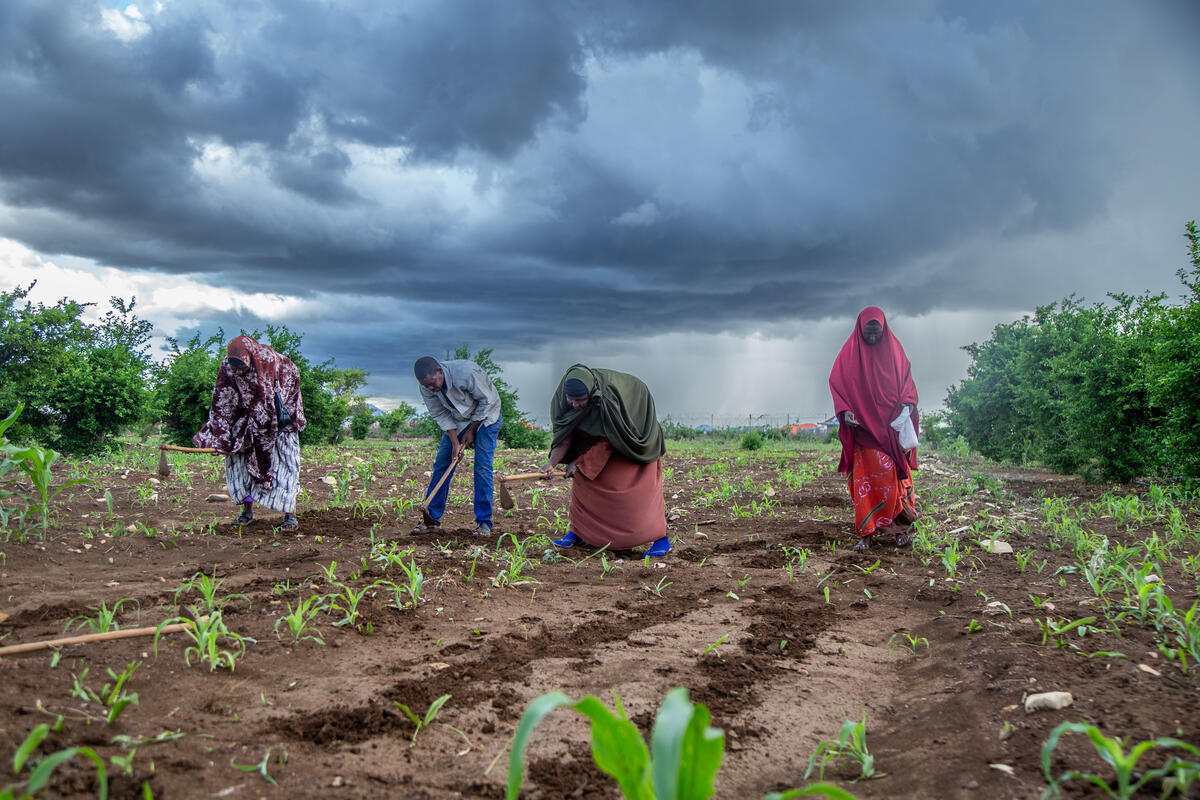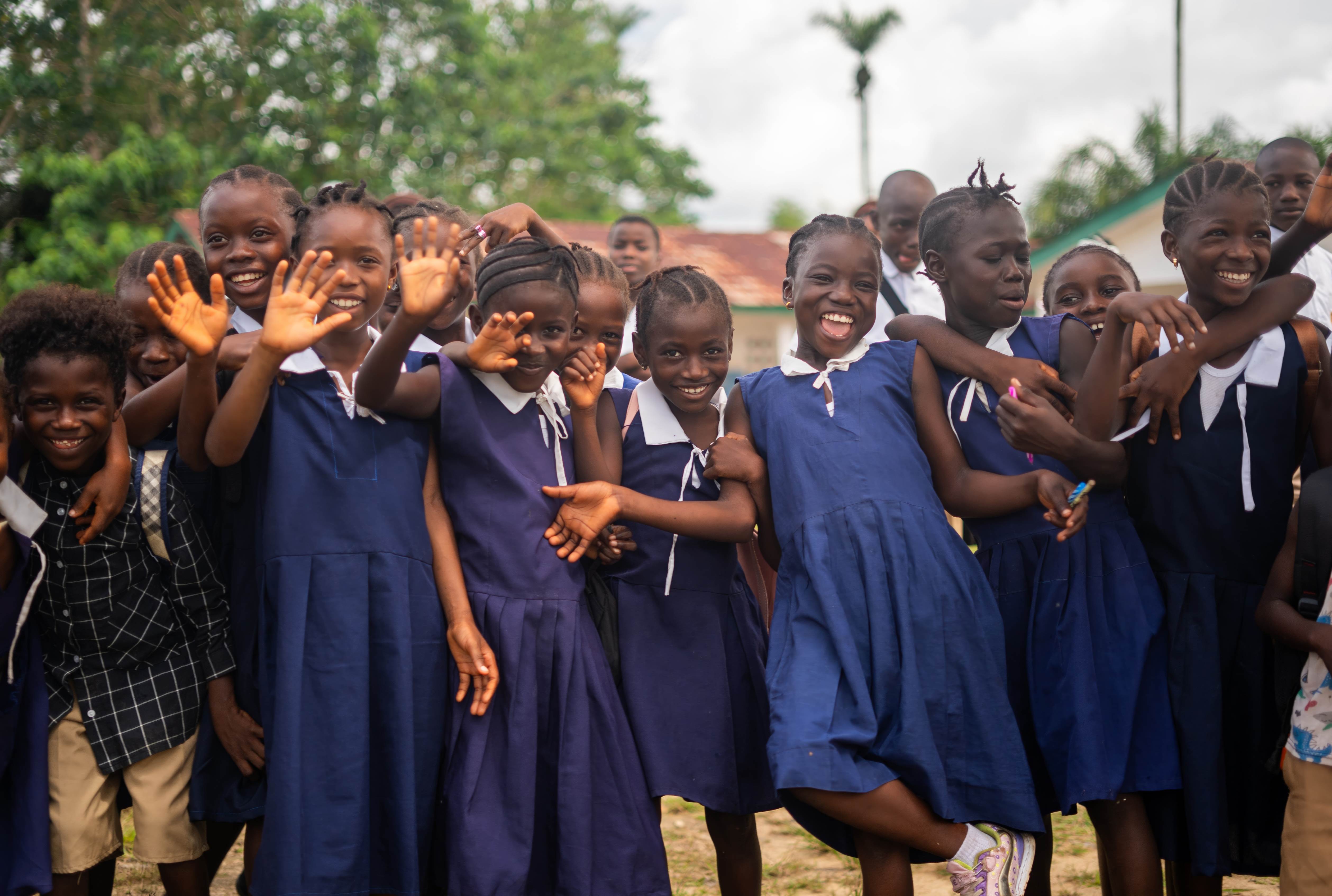
10 facts about Sierra Leone
Discover interesting Sierra Leone facts and our work to help.
Sierra Leone is known for its white-sand beaches, tropical climate, diverse ecosystems and vibrant culture. However, the country is also facing political instability, extreme hunger and ongoing violence which is putting children and their families at risk of harm.
Keep reading to discover 10 Sierra Leone facts and how you can protect children from harm.
- Location: West Africa
- Population: 8.9 million
- Capital city: Freetown
- The interesting meaning behind Sierra Leone’s flag
- Languages spoken: English, Krio
- Independence Day: 27 April 1961
- Currency: Sierra Leonean Leone
- The country is facing a food crisis
- Child marriage became illegal in July 2024
- World Vision aims to reach 1.7 million children

1. Where is Sierra Leone?
The country is on the southwest coast of West Africa, with only two bordering countries and the Atlantic Ocean to the west.
- Northern and eastern border: Guinea
- South-eastern border: Liberia
- Western border: the Atlantic Ocean
2. The population of Sierra Leone currently stands at 8.9 million
As of 2024, the Sierra Leone population is 8.9 million, accounting for 0.11% of the world’s population.
The median age in Sierra Leone is 19.3 years, reflecting Africa’s status as having the youngest population in the world, with 70% of sub-Saharan Africa under the age of 30.
4. Freetown is the capital of Sierra Leone
Where is Freetown? Freetown is on the West Coast of Sierra Leone, deriving its name from the country's origins as a settlement for freed slaves. Sierra Leone’s capital city became an established city in 1792 as a home for freed slaves from England and the Americas.
After Britain officially abolished the slave trade in 1807 up until the 1860s, the British navy intercepted illegal trading ships and freed the captives so they could resettle in Freetown.
4. The country’s flag has an interesting meaning
Sierra Leone’s flag is made up of three horizontal stripes showing different colours, which each have their own hidden meaning.
- Green: Referring to the country’s abundant natural resources, from its mountainous terrain to the agricultural practice
- White: Symbolising their hope for unity and justice
- Blue: Representing their natural harbour in the capital city
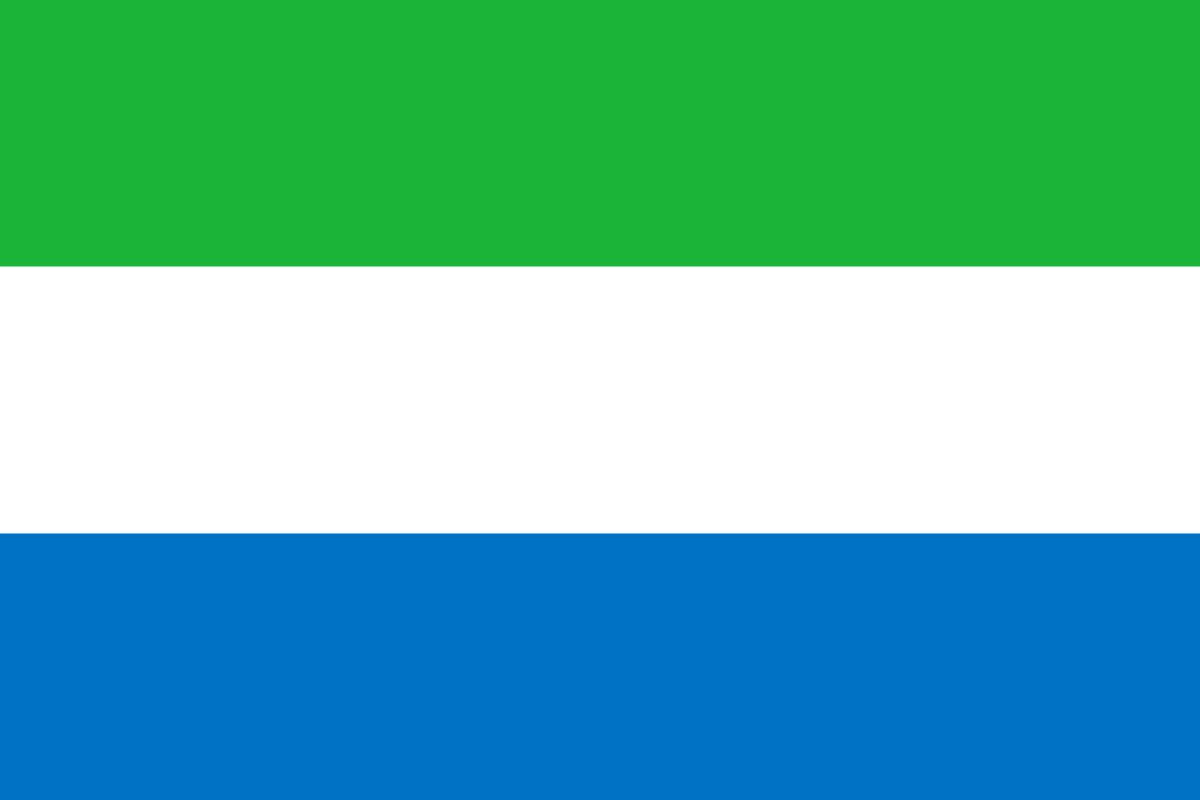
5. What languages are spoken in Sierra Leone?
Sierra Leone is a multilingual country, with Krio as the most widely spoken language. Krio is an English-based creole, providing the country with a mutual method of communication amongst the tribes and ethnic groups that use approximately 23 other languages.
English is the official language used in schools, government administration and the media.
What is creole? The term ‘creole’ is defined as a type of language that formed a mother tongue from a mixture of languages.
6. Sierra Leone gained independence on 27 April 1961
In 1787, the British negotiated with local leaders to acquire part of Sierra Leone. They established Freetown to provide a settlement for freed slaves and intercept slave ships. By 1896, colonisation expanded to take control of the entire country.
After World War II, Sierra Leone started to advocate for self-governance and independence. And in 1961, Sierra Leone officially declared independence from Britain.
Sir Milton Margai, one of the key figures in negotiations for independence, became the first Prime Minister of Sierra Leone post-independence.
7. What is the currency for Sierra Leone?
On 4 August 1964, Sierra Leone introduced its own currency, the Sierra Leonean Leone, to replace the British West African pound.
Unfortunately, the exchange rate depreciated sharply after mid-2021, making the country face significant challenges with high inflation and higher poverty rates.
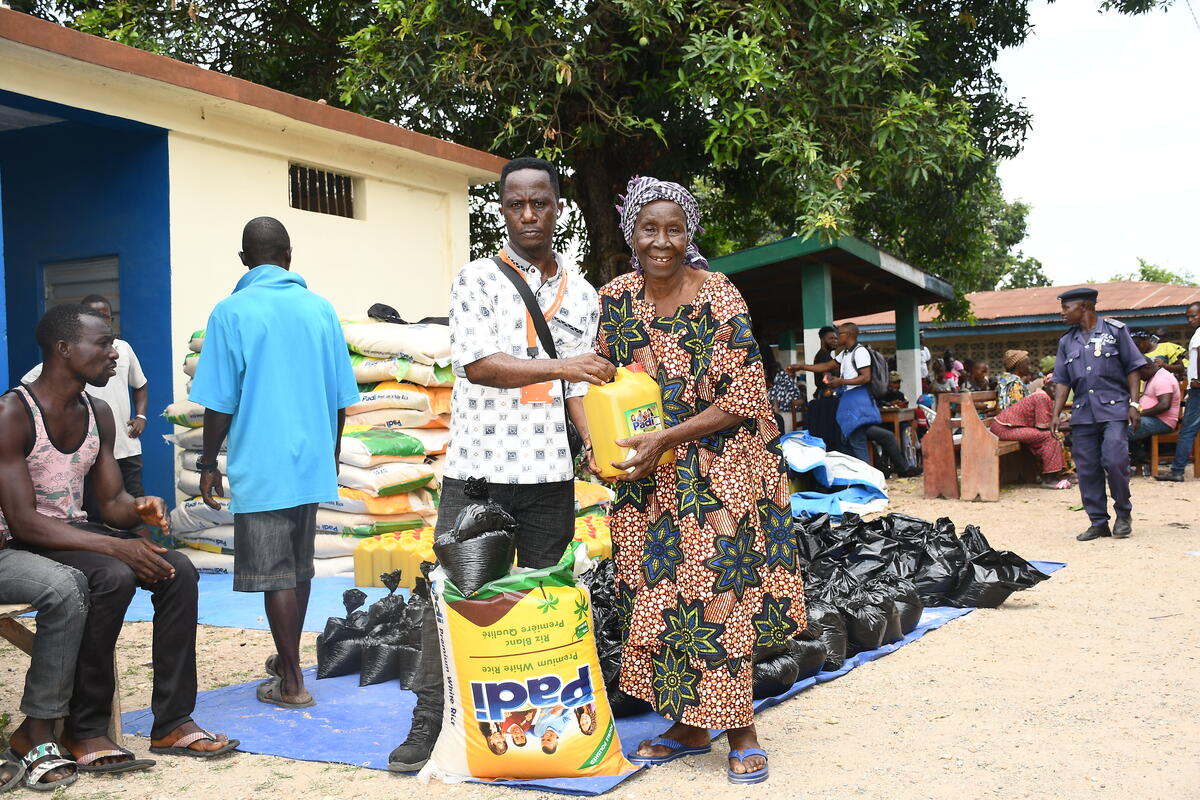
8. Sierra Leone is facing a food crisis
Food insecurity is a significant issue in Sierra Leone, influenced by various factors including poverty, economic and political instability, and climatic conditions. Many families rely on farming to meet their personal needs, but low productivity is an issue due to lack of materials, and low-quality infrastructure.
According to the World Food Programme, 82.3% of people are food insecure, meaning that they are lacking reliable access to enough nutritious food.
In response to Sierra Leone’s food insecurity, World Vision is providing cash, food vouchers, agricultural seeds, and fertilizer to 7,000 households. We’re also supporting children’s access to healthcare and implementing child protection measures to ensure they’re empowered to experience life in all its fullness.
9. The Government made child marriage illegal in 2024.
Child marriage is a major concern in Sierra Leone. The country is home to 800,000 child brides, with 30% of girls marrying before age 18.
On Tuesday 2 July 2024, the country’s President, Julius Maada Bio, signed the Prohibition of Child Marriage Bill 2024. Supporters of this legislation hope to protect young girls in Sierra Leone by making it a criminal offence for any man to marry a girl under the age of 18.
The new child marriage law builds upon Sierra Leone’s previous efforts to protect young girls from this harmful practice. In 2023, the country adopted a law which ensures children receive 13 years of free education, with hopes to reduce the rate of early marriages.
Did you know? Studies show that the average age at first marriage increases along with higher levels of education in Sierra Leone. For a girl with no education, the average age at first marriage is 18.7 years, whilst this age rises to 21.9 years among women with a secondary education.
10. World Vision aims to support 1.7 million children in Sierra Leone by 2025
World Vision Sierra Leone (WVISL) has been in operation since 1996, providing food aid and supporting agricultural recovery. Currently, WVISL runs 28 Area Programmes to support the country’s development, response to disasters and improve their understanding of children’s rights.
WVISL will contribute to the wellbeing of 1,737,570 children in Sierra Leone by 2025 by focusing on:
- Increasing the number of children who have positive and peaceful relationships with families and communities
- Protecting more children from infection and disease (age 0-5 years old)
- Improving the reading abilities of primary school children.
How we’re helping children around the world
As a children’s charity, World Vision works with families and communities to address the underlying causes of poverty and improve child wellbeing. Thanks to our generous supporterss, we work in almost 100 countries to transform the lives of the most vulnerable children.
We’re there when disaster strikes, but we’re also there supporting communities to build resilience and ensure long-term transformation. We’re also hosting the Raising Changemakers podcast with Carrie Grant MBE to put a spotlight on important issues that affect many children and families in the most vulnerable countries, including Sierra Leone.

